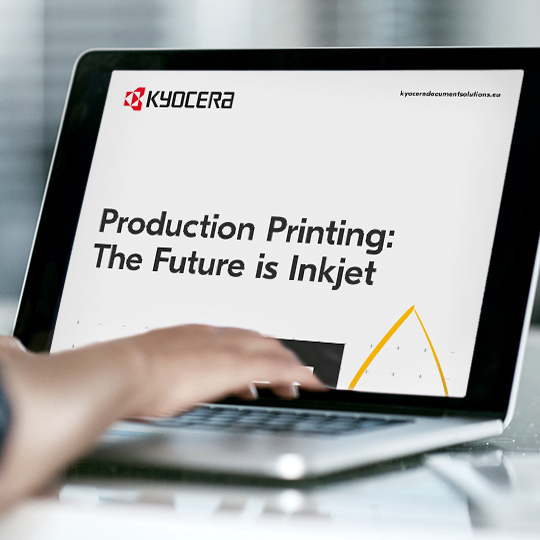The past 10 to 15 years haven’t been kind to large scale print in any industry. The financial crisis came crashing down and few areas were hit harder. Sinking businesses had to cut costs in any way that they could and one of the first targets were marketing departments. That meant that they cut back on their advertising and publicity campaigns and looked to digital as a cheaper alternative to reach wider audiences on a budget. The result for those in print services? Unsustainable price wars which led to companies going out of business.
In our industry, we saw market-leaders in printing press facing bankruptcy. Even giants in the printing press sector such as global firms like Shinohara could not compete and saw their sales more than halve in just a year between 2009 and 2010, going from €41 million to €18 million. It became clear that these traditional approaches were no longer the solution for a market where customers were becoming more demanding than ever as their budgets were slashed and the need for added value soared.
As is always the case when market forces are driving swathes of businesses towards insolvency, those who survived had to find a way to recover. Businesses who were content treading water were slowly sinking, being pulled under by the weight of the financial crash. To keep afloat, companies had to innovate and find new ways to add value to what they were creating.
That coincided with some of the fastest rates of technological development that we have ever seen. Laser devices had reached their peak and found no new way to offer solutions to companies looking to find a way other than cost to compete. That fuelled the investment in innovation in digital printers and advancements in inkjet. Document solutions companies were facing their own challenges as office-based markets became oversaturated and organisations turned to digital. As two industries which are so closely aligned took hit after hit, joint innovation was the key to getting back up and going again.
Of course, costs remained central. No matter how innovative and creative businesses looked to be, conservative industries would always look to costs as the bottom line. Any new technology had to reduce costs to even make it onto the table. Inkjet offers that. Not only is it cheaper to use ink than toner, but the devices also have fewer components. That means that there is a reduced chance of a dreaded breakdown or malfunction.
The Future is Inkjet.
What’s more, inkjet devices are better for the environment too. By avoiding the need to rely on heat to fuse toner onto paper, energy consumption is reduced. That impacts not just the cost of a print job, but also the environmental cost by cutting waste and improving efficiency. At Kyocera, we believe that pursuing innovation, and with the environment in mind is essential.
The rise of such devices has also provided a solution to two of the industry’s greatest needs. Firstly, concerning cost optimisation, the need to find a productive way of printing jobs that typical MFP devices are not designed to support and where organisations cannot justify the quantity required to make a printing press profitable. Inkjet production printers have done just that, filling the gap with an effective solution, offering economies of scale whilst reducing waste.
The other is the need to add value. As customers grow more and more demanding, they require clear ways in which value has been added to printed communications. The answer lies in customisation of printed materials. A study from Evergage and Researchscape International found that 98% of marketers recommend personalisation to improve customer relationships, whilst 90% say they have experienced a measurable lift in business revenue as a result of a personalised campaign. In 2019, one in every two organisations said that they would increase their budget for personalised materials, an 11% increase on 2018, opening a unique opportunity to those who rely on large scale print.
Digital production print devices provide a way in which materials can be personalised, providing the key to adding value. By linking with data intelligence to tie in with business systems and workflows, every document can be different. It is the innovation that customers have demanded and an essential benefit suppliers are now providing. At last, by becoming customer-centric companies relying on large scale print have a way to compete that no longer relies upon cutting prices to unsustainable levels.
A new era has arrived, shedding light to this segment. It is an opportunity to take the next step and add value to what large scale print can offer. By incorporating the wealth of data intelligence at our fingertips, businesses can truly take advantage of the opportunities presented by the digital age.
This is why we will be joining industry leaders at DRUPA, the sector’s major conference of the year in Dusseldorf in June 2020, where we will have a stand in Hall 6. We firmly believe that the future of the large scale print lies in production print, and is an example of one of the markets that stand to gain. By introducing new technology to provide added value whilst cutting costs, we are following the Kyocera philosophy of striving for greatness.

Be part of something special
Want to be a part of the first ever online version of drupa? Now you can – and it’s free!
To attend live demonstrations with the best in the business, all you have to do is visit the drupa homepage where you will find drupa registration information.

The Future is Inkjet
Read our eBook to see how inkjet technology is transforming high-volume printing.

